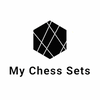Introduction to the Concept of Solving Chess
Chess, with its deep strategic elements and complex possibilities, captivates millions of enthusiasts around the globe. A historically rich game, it has long been a subject for competitive play and intellectual discourse. One of the most intriguing questions in the realm of chess is whether it is possible to solve the game. Solving chess means determining the outcome of the game from any given position, assuming both players play perfectly.
The Complexity of Chess
Chess is played on an 8x8 board with 16 pieces per player. Each type of piece has its own rules of movement. The game begins with a fixed starting position and progresses through the strategic decisions of each player. The complexity of chess arises from the vast number of possible positions and moves. It is estimated that the number of unique chess games that can be played exceeds the number of atoms in the observable universe.
Understanding Game Complexity
The complexity of games can be categorized into combinatorial game theory, which typically focuses on zero-sum games with two players. The complexity of chess, especially when considering the number of possible games (10^120), categorizes it as an exponential game. This makes the task of solving it extraordinarily challenging due to the sheer volume of potential moves and counter-moves.
Efforts and Challenges in Solving Chess
Throughout history, individuals and groups have used a variety of methods to understand chess at a deeper level, often employing technology to analyze potential outcomes. The advent of powerful computers and advanced algorithms has opened new avenues in this field.
Computer and Artificial Intelligence in Chess
Arguably, the most significant advancement in playing chess has come through the development of chess engines and artificial intelligence. Programs like IBM's Deep Blue and more recently Google's AlphaZero have been able to defeat human world champions. AlphaZero, utilizing machine learning and self-play, represents a significant step towards solving chess by evaluating positions and strategies in a way that mimics human intuition but with the depth and speed of a computer.
Potential Paths to Solving Chess
Chess could theoretically be solved using a brute force technique, which involves evaluating every possible endgame scenario, deriving backwards to deduce what moves lead to these outcomes. In practice, the number of computations required is infeasible with current technology.
The Role of Endgame Tablebases
One approach that has seen some success is the development of endgame tablebases, which provide perfect play from some positions with a limited number of pieces on the board. As of now, tablebases exist for all endgame scenarios with up to 7 pieces. Extending these tablebases to more complex scenarios as computational capacity grows could inch closer towards theoretically solving chess.
Quantum Computing: A Future Hope?
Quantum computing offers a potential future where the immense processing power could handle the complex, parallel computations needed to solve chess. However, substantial advancements in quantum technology and theory are required to reach this point.
The Philosophical and Practical Implications
If chess were ever to be solved, the implications would be profound. It would transform chess from a dynamic contest of strategy to an exercise in recollection and application of proven solutions, potentially reducing the game's appeal. From a practical perspective, solving chess could also lead to new insights in mathematics, computer science, and cognitive studies.
Conclusion
While the theoretical possibility of solving chess exists, the practical limitations of technology and the fundamental complexity of the game make it a distant reality. For now, chess remains an open, competitive field that continues to challenge the intellectual capabilities of humans and machines alike, holding a special allure that is unlikely to diminish even if the game were solved.
Explore our large collection of luxurious chess sets!